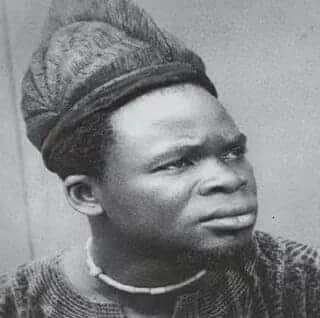Duro Ladipo
 On 11 March 1978, Durodola Durosomo Duroorike Timothy Adisa Ladipo (18 December 1926 – 11 March 1978), more commonly known as Duro Ladipo, died at the age of 51 after a short illness. He was one of the best known and critically acclaimed Yoruba dramatists who emerged from postcolonial Africa. Writing solely in the Yoruba language, he captivated the symbolic spirit of Yoruba mythologies in his plays, which were later adapted to other media such as photography, television and cinema. His most famous play, Ọba kò so (The King did not Hang), a dramatization of the traditional Yoruba story of how Ṣango became the Orisha of Thunder, received international acclaim at the first Commonwealth Arts Festival in 1965 and on a Europe an tour, where a Berlin critic, Ulli Beier, compared Ladipọ to Karajan. Ladipo usually acted in his own plays.
On 11 March 1978, Durodola Durosomo Duroorike Timothy Adisa Ladipo (18 December 1926 – 11 March 1978), more commonly known as Duro Ladipo, died at the age of 51 after a short illness. He was one of the best known and critically acclaimed Yoruba dramatists who emerged from postcolonial Africa. Writing solely in the Yoruba language, he captivated the symbolic spirit of Yoruba mythologies in his plays, which were later adapted to other media such as photography, television and cinema. His most famous play, Ọba kò so (The King did not Hang), a dramatization of the traditional Yoruba story of how Ṣango became the Orisha of Thunder, received international acclaim at the first Commonwealth Arts Festival in 1965 and on a Europe an tour, where a Berlin critic, Ulli Beier, compared Ladipọ to Karajan. Ladipo usually acted in his own plays.
Ladipo started his personal theatre group in 1961, but he became fully established with the founding of the Mbari Mbayo Club in Oṣogbo. His popularity as the leader of a folk opera group rests on his three plays: Ọbamoro in 1962, Ọba ko so and Ọba Waja in 1964. Ọba Waja - "The King is Dead" - is based on the same historical event that inspired fellow Nigerian playwright Wọle Ṣoyinka's Death and the King's Horseman. He also promoted Mọremi, a play about the Yoruba ancestress of the same name. He later transformed Mbari Mbayo into a cultural center, an arts gallery and a meeting point for young artists seeking to develop their talents. Ladipọ wrote quite a number of plays, including Suru Baba Iwa and Tanimowo Iku. Some of his plays were also produced for television. In fact, he created Bode Wasinimi for the Nigerian Television Authority, Ibadan. In 1977, Ladipo participated in FESTAC '77, the Second World Festival of Black and African Arts and Culture, in Lagos, Nigeria.
He died on March 11, 1978, at the age of 51 after a short illness. It is said that when he died the heavens opened, and there was sudden rain with lightning and thunder. This was interpreted as a sign that Sango, the god of thunder and the main character of his most famous work, welcomed him into the heavens.
(Source: Wikipedia, accessed on 20 March, 2024)
Selected Publications
His own plays
Ladipo, Duro, Ọba kò so (The King did not Hang): Opera, Occasional publication, 1968.
Secondary literature
Ogunbiyi, Yemi, Drama and Theatre in Nigeria: A Critical Source Book, Tanus Books Limited, 2014.
Ogunleye, Foluke, Theatre in Nigeria: Different Faces, Humanities Publishers, 2007.
Documentary
The creative person: Duro Ladipo (1967)

